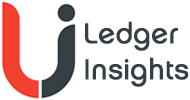On Wednesday Digital Asset announced a partnership with Euroclear to explore the market appetite for tokenized collateral on the Canton Global Collateral Network (GCN). Together they aim to study the potential for at least two opportunities. One is to make collateral for traditional institutions (TradFi) more globally mobile, rather than being locked in one geographic region. Another is to explore providing collateral management services for cryptocurrency exchanges.
We were curious about the second one, given Euroclear is such a significant financial market infrastructure. As a tri-party agent, its Collateral Highway manages $2 trillion in assets.
Take margin requirements for derivatives trading. Apart from initial margin, when prices move, firms have to post variation margin. This includes choosing the acceptable collateral that’s available and making the transfer.
There’s a different process for securities lending. Say a stock has been lent by one firm to another, but now that stock is being sold. So the securities have to be retrieved, and new collateral has to be substituted for the lending transaction. These are some of the functions that tri-party agents manage.
Tokenized RWA as collateral for crypto exchanges
In an interview with Ledger Insights, Euroclear’s Jan Grauls confirmed the intention is to explore tokenized traditional securities, or real world assets (RWA) as collateral at cryptocurrency exchanges. While RWAs are the starting point, given that is Euroclear’s sweet spot, crypto is not entirely off the table.
By using RWAs rather than crypto as collateral, the lower correlation of prices could reduce the risk of cascading liquidations in a crisis.
Mr Grauls discussed the potential role that Euroclear could play.
“When the market is under stress, when people are defaulting and when you need certainty on access to your collateral, it requires a high level of trust in your provider for collateral management,” he said.
“As a result, we think we might be able to play a role, because we are an FMI (financial market infrastructure), because people have a very high degree of trust in us, (and) because we’re used to addressing concerns around asset protection, custody, access to collateral in the event of default, etcetera. That’s really our bread and butter in the TradFi space.”
The initiative is still at an early stage, but Mr Grauls is quite clear about its aim to clarify the potential appetite for Euroclear services. Who would be interested in the tokenized collateral management? Bear in mind that many of the largest crypto traders come from the traditional space, such as DRW’s Cumberland, Flow Traders, Jane Street, Jump Crypto and others. They will be accustomed to managing collateral in a more traditional way, although they will want to see more 24/7 capability for crypto. But other types of firms might also be interested.
Euroclear also wants to establish the potential for volume or scale. And will clients want to manage collateral in the traditional way, or will collateral be exchanged on ledger?
Network effects for tokenized collateral
For both crypto and the TradFi collateral mobility use case, the answers to these questions come down to network effects. Like payments, collateral management works on network effects. There’s no point in using a network unless your counterparty is on the network. But if there’s only one counterparty, it’s probably not worth the trouble of onboarding.
Digital Asset’s Kelly Mathieson noted that this initial design phase is the first step of a larger project which aims to go into production. Given it’s at such an early stage, the specifics have not yet been pinned down, including the timescale.
However, Digital Asset already has quite a bit of the technology available off the shelf. Additionally, this solution could be useful for other users of Canton technology in the future. While Ms Mathieson didn’t mention any names, two examples are Broadridge, with its DLR repo platform that processes $1.5 trillion in transactions monthly and Equilend, the largest securities lending platform in the United States. Plus, crypto firms are starting to join the Canton Network, such as stablecoin issuer Circle and its recently acquired asset manager Hashnote.
Does Hashnote offer learnings for collateral?
Hashnote is a crypto startup founded by executives at traditional trading firm DRW. One of its main offerings is USYC, a tokenized money market fund. With assets under management of more than a billion, it’s the largest on a public blockchain, bigger than BlackRock’s BUIDL, even though it launched later. It’s instructive for the collateral network for two reasons.
Firstly, Hashnote structured its token differently to most traditional money market funds to make it easier for exchanges to use as collateral. Money market funds usually pay out earnings regularly, and managing those payouts might be a hassle for exchanges to track. So Hashnote’s USYC accumulates the yield.
Keeping track of earnings on collateral is just one function that a collateral management system offers. Hence, the structure of the token becomes less important.
Secondly, Hashnote marketed USYC as the perfect collateral for exchanges. It signed up Deribit, the popular derivatives platform, as well as QCP Capital. However, looking at blockchain statistics, Deribit accounts for under $5 million of USYC’s assets. More than 96% are used as collateral by stablecoin issuer, Usual.
Which comes back to Mr Grauls’ question – which firms will be interested in collateral management? Will it be crypto exchanges and trading firms. Or might it be stablecoin issuers? Or someone else?
The benefit to trading firms is clear. “When you work with an organization that has that degree of expertise and mindset that comes with Euroclear, you know that your ability to grow your trading activity and your trading volume is going to be increased,” said Ms Mathieson.






